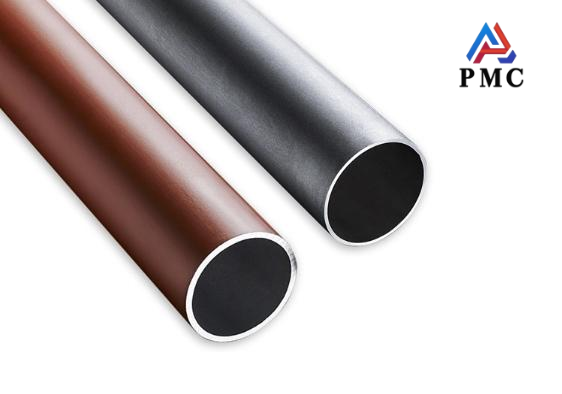
Carbon Steel Tube Material Secrets: a Variety of Choices from Basic to High-end
In many fields such as engineering construction, machinery manufacturing, petrochemicals, etc., carbon steel tubes are an important basic material. The diversity of its materials provides a wealth of choices for different application scenarios. This article will explore the material classification of carbon steel pipes in depth, revealing its wide range of choices from basic to high-end.
Basic material: ordinary carbon steel
Ordinary carbon steel is the most basic material in carbon steel tubes. Its carbon content is generally below 0.25%, mainly including Q235, Q345 and other grades.
This type of carbon steel has good weldability. During welding operations, it can easily achieve connection between components, and the strength after welding is high. It also has good processability and can be made into carbon steel tubes of different shapes and specifications through various processing methods. Carbon steel tubes made of ordinary carbon steel are widely used in daily life and industrial production. Ordinary carbon steel pipes play an important role in low-pressure fluid transportation, structural support and general equipment manufacturing.

Strengthening material: low alloy steel
If ordinary carbon steel cannot meet the needs, low alloy steel is an advanced choice. Low alloy steel is made by adding a small amount of alloying elements such as chromium, nickel, molybdenum, vanadium, etc. to carbon steel. The total content of these alloying elements usually does not exceed 5%. Don't underestimate this small addition, it can significantly improve the performance of steel.
With these characteristics, low alloy steel is suitable for some pipeline systems with higher requirements for pipeline performance, medium temperature and pressure. In the pipeline laying of the petroleum and chemical industries, low alloy steel carbon steel pipes are often seen. They can withstand the pressure of the fluid in the pipeline and the corrosion of chemical substances, ensuring the safety and stability of transportation.
High-end materials: high alloy steel and stainless steel
High alloy steel, as the name suggests, is not simple. The content of alloying elements in this type of steel is more than 10%, and contains a large amount of alloying elements such as nickel, chromium, molybdenum, tungsten, etc. Such a high proportion of alloying elements gives high alloy steel a series of excellent properties. It has excellent corrosion resistance and can remain stable in highly corrosive media; it also has excellent high temperature resistance and can work for a long time in high temperature environment; it also has strong mechanical properties and can withstand huge pressure and impact.
Stainless steel is a special high-alloy steel, and its chromium content is generally more than 12%, which is the key to its excellent corrosion resistance. In addition to corrosion resistance, stainless steel also has good decorative properties, with a smooth and bright surface and a full texture. Common stainless steels are mainly austenitic stainless steel and ferritic stainless steel. Austenitic stainless steel has good toughness and processing properties, and can be easily processed into various complex shapes; ferritic stainless steel has good chloride corrosion resistance and oxidation resistance. These high-end carbon steel pipes play a vital role in the chemical, petroleum, nuclear power and other fields, ensuring the safety, reliability and long-term stable operation of the pipeline system.
How to choose the right carbon steel tube material?
First of all, we need to consider the use scenario and working conditions of the pipeline. If it is used for ordinary water supply and drainage systems in buildings, ordinary carbon steel can meet the needs; but if it is used to transport corrosive chemicals in the petrochemical industry, it is necessary to choose stainless steel or high-alloy steel with better corrosion resistance.
Judging from the pressure and temperature that the pipeline is subjected to, ordinary carbon steel or low-alloy steel can be used in environments with low pressure and low temperature; however, in high temperature and high pressure environments, high-alloy steel with excellent mechanical properties and high temperature resistance must be used.
In addition, cost is also an important consideration. Ordinary carbon steel has a relatively low cost, and can effectively control costs while meeting the use requirements; however, stainless steel and high-alloy steel have higher costs due to their performance advantages and complex production processes. If the budget is limited and the performance requirements are not particularly stringent, you need to choose carefully.
Conclusion
The diversity of carbon steel tube materials provides a wealth of choices for different application scenarios. From basic ordinary carbon steel to high-end high-alloy steel and stainless steel, each material has its unique performance advantages and applicable fields. When choosing the material of carbon steel tube, it is necessary to consider a variety of factors to ensure the safety, reliability and long-term stable operation of the pipeline system. With the continuous advancement of science and technology and the continuous changes in engineering needs, it is believed that the materials of carbon steel tubes will be more diverse in the future, injecting new vitality into industrial development.
Read more: 10# Seamless Carbon Steel Pipe: Solid Backbone in the Industrial Field


